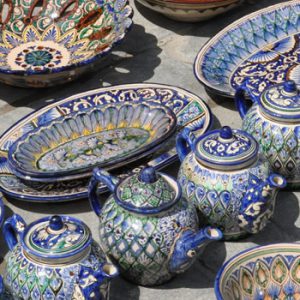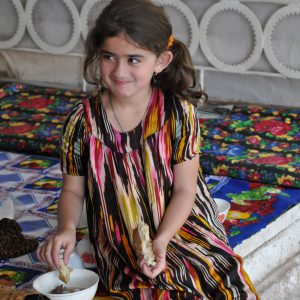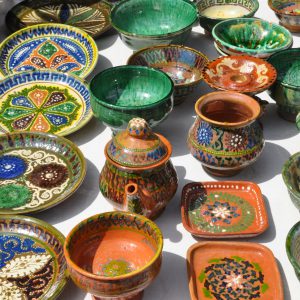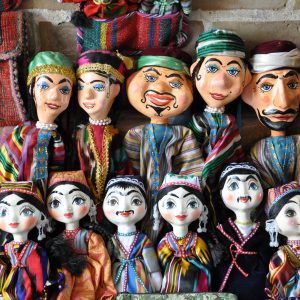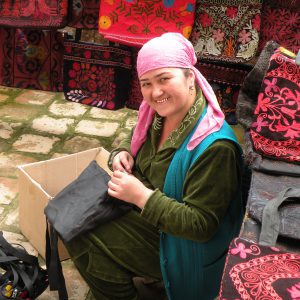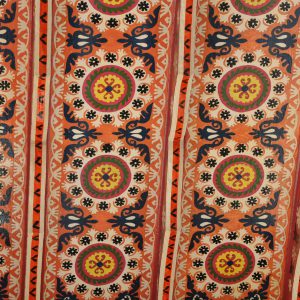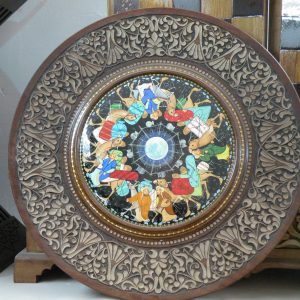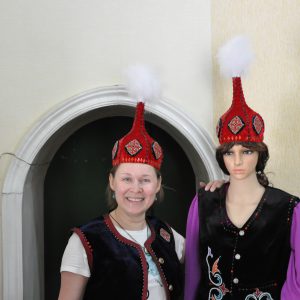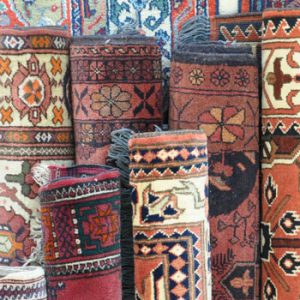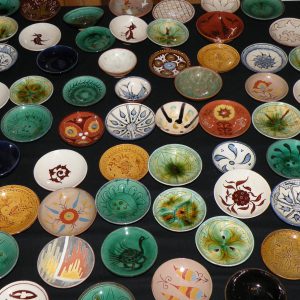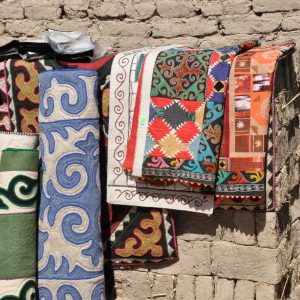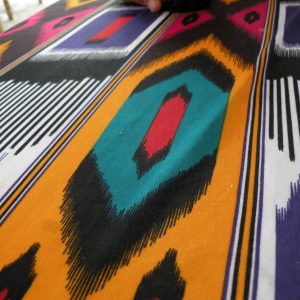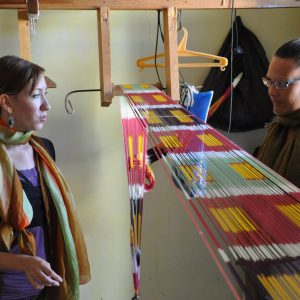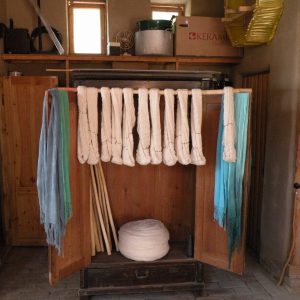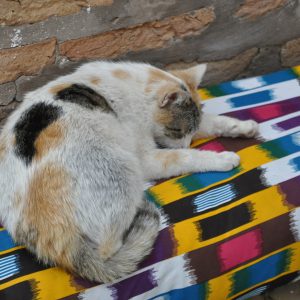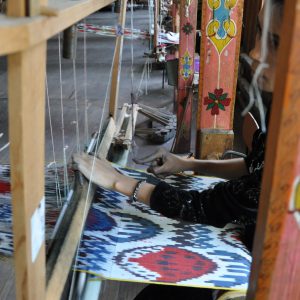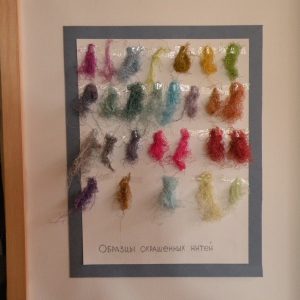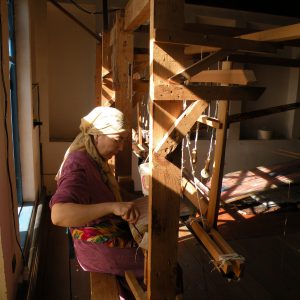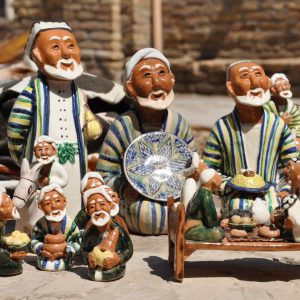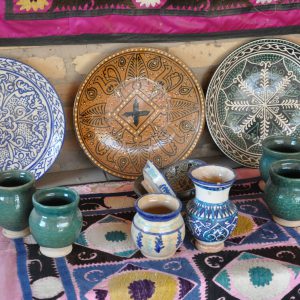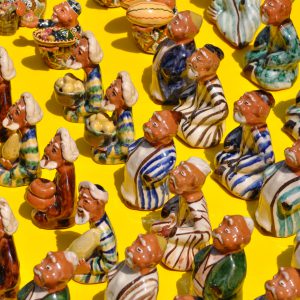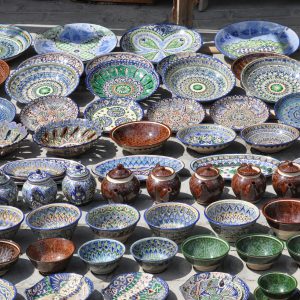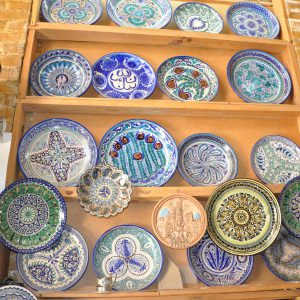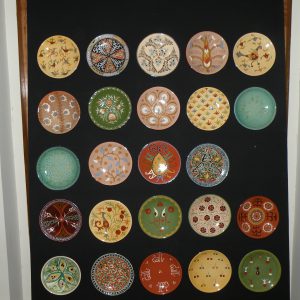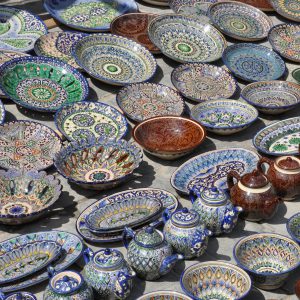Central Asia is rich in traditional crafts: silk, ceramics & pottery, carpet weaving, woodcarving, gold embroidery, metal chase. It is possible to see both ancient techniques in small private workshops and larger modern factories. The craft centres are located in different parts of the region and can be well added to any kind of tour as a special experience. At the same time a special interest tour devoted mainly to crafts will surely pass through the main historical and architectural sites thus allowing the travelers to see and explore the “musts” too. The workshops and local craftsmen offer many options for master-classes which can be as well added to any trip.
Local crafts are definite attractions of Uzbekistan and other Central Asian countries. Different regions have their own crafts which they are famous for, as crafts originally appeared in the places with appropriate natural conditions. There are small private family run workshops with traditions carefully preserved from ancient times as well as large and quite modern production centres.
A tour around Uzbekistan will show the diversity of local crafts, discovering skills of the masters and enjoying bright vivid colors and personal touch. At the same time a special interest trip devoted to a certain handicraft will show regional specialties in design and production. All of the possible craft oriented trips can pass through the main historical heritage sites to fulfill the cultural interest of the travelers.
Visiting a production centre or a private workshop, having an evening meal in a family run studio of a famous master, or taking a master-class will certainly brighten any kind of trip.
Silk, pottery and ceramics, carpets are probably the first crafts to come into one's mind while thinking of Central Asia. But these are far not all of them. There are great pieces of metal chase, woodcarving, gold embroidery, miniature painting. All of the crafts listed below are produced locally and will become nice souvenirs from these lands.
Silk
Coming to a textile market you will be amazed with diversity and brightness of colors. Silk textiles are produced in many regions in Uzbekistan and Central Asia and one can buy silk and various silk items almost in any town of Uzbekistan. But the most known and important silk centre of Uzbekistan is certainly the Fergana valley. This is one of the first places where silk appeared outside of China.
In Fergana valley one will find all stages of silk making: cultivating silkworms on mulberry trees, extracting fibers, manufacturing silk and sewing various silk items ready for sale. Margilan town is the heart of silk production, often called the Silk capital of Uzbekistan. There are 2 rather big state-owned silk factories there and one of them, Yedgorlik Factory is the only one which still follows the ancient silk making traditions and where silk is made mainly by hands. The other factory Khan-Atlas is quite modern and silk is produced by machines.
Above all there are private silk producers in the region too. So for those who are especially interested in buying good silk at good price and would also like to look deep into the process, Fregana valley is a perfect place to feed the interest.
But if the schedule does not permit to travel to Fergana valley, it is of course possible to buy silk in other towns of Uzbeksitan. For example, in Bukhara there are several private studios making beautiful scarfs and items from silk and sell them in the souvenir market in the old town.
Pottery and ceramics
As well as silk, pottery is mostly developed in Fergana valley. And most part of the beautifully decorated lyagans and tea bowls are produced in the town of Rishtan, located in the region with very good clay that is widely used by local ceramists since ancient times. Located on the famous Silk road Rishtan ceramics became very popular all over Central Asia and in the 18th century became the main ceramic centre of the region. Nowadays there is quite a large number of families in Rishtan where skills and secrets are passed from father to son already in many generations. The so-called true Masters are following ancient techniques. And most of the Masters have their own schools where they share their knowledge and experience with younger generations. Local Masters like Rustam Umanov and Alisher Nazirov are well-known outside Uzbekistan.
There are basically 2 kinds of specialists: those who form the bowls and those who paint them. Most family-run workshops give short tours where they show the whole process from molding to painting and baking and tell about ornaments and traditions. Then there is usually a small exhibition of the items made in the workshop which one can buy too. All of them are very beautifully decorated by masters.
Finally, for those who do not plan to travel to Fergana valley, it is very interesting to visit Rakhimovs' studio in Tashkent. Rakhimov's dynasty is one of the most popular all over Uzbekistan. There are already 6 generations of Masters, and the most known among them is Mukhitdin Rakhimov (1903-1985). His works are exhibited in many museums all over the world, including the Hermitage, State Museum of Oriental Art in Moscow and others. Together with professional archaeologists Muhitdin Rahimov investigated ancient ornaments and then restored them and created his own masterpieces in ancient techniques. Nowadays his grandson is follows family traditions and uses ancient ornaments in his works.
Of course ceramics can be purchased in many markets not only in the workshops. But visiting the ceramist the travellers will get a chance to buy the items they've almost seen being made.

